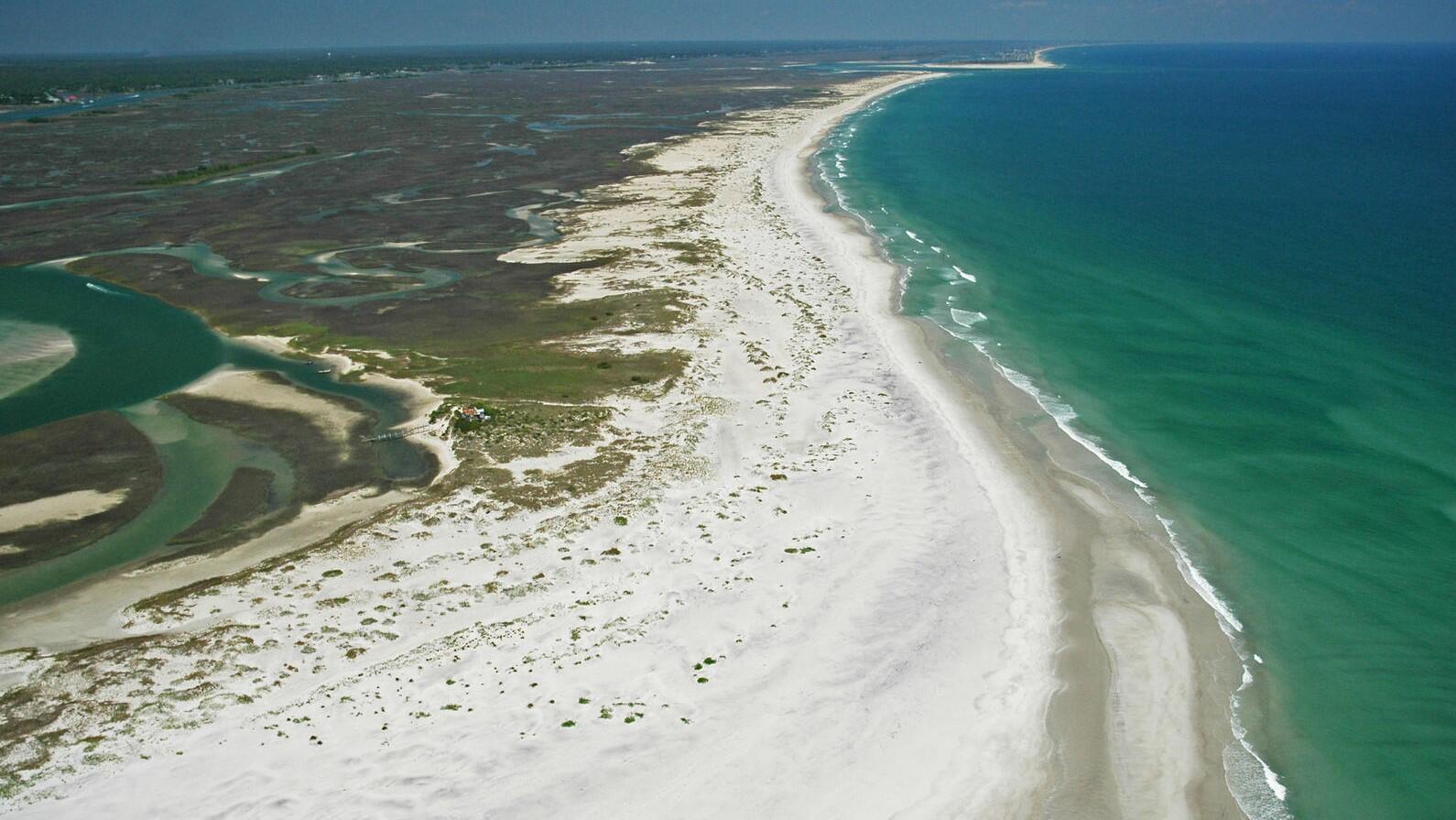
Standing high atop a dune on Hutaff Island last summer, I was struck by just how remarkable it is. On my left, a mile north, was the Surf City water tower on Topsail Island. On my right, to the south, were the elegant homes of Figure 8.
But where I was standing was pristine, one of the last untouched places on the North Carolina coast, where natural processes of accretion and overwash still shape the shoreline as they have for millennia.
On warm days, families boat to Hutaff to splash in the water and marvel at flocks of birds overhead. On this visit, I watched a colony of Least Terns that seemed too numerous to count, feeding their chicks right on the open beach.
Coastal geologists describe Hutaff as "nature's speed bump.” When hurricanes crash toward the coast, the island is our first line of defense, slowing storms before they reach the mainland. A recent study estimated the economic and storm protection benefits of conserving the island at $278 million.
This is what it looks like when we invest in natural infrastructure, working with the landscape instead of against it to make our communities more resilient and help birds at the same time. Just like roads and bridges, our natural landscapes—marshes, beaches, floodplains—provide critical services, from absorbing carbon to flood mitigation.
In the northeast corner of the state, the vast marshes of Currituck Sound are a nursery for wildlife, but they also reduce the worst impacts of erosion and rising seas before they reach nearby communities. At Audubon’s Pine Island Sanctuary, we’re working with our partners to restore Currituck’s marshes, most recently with a living shoreline funded by the NC Land and Water Fund.
Living shorelines stabilize the marsh while allowing aquatic life to flow through. The town of Duck is taking a similar approach with a living shoreline to restore habitat and protect a critical stretch of Highway 12. The moral of the story is simple: natural infrastructure allows us to engineer with nature, restoring and mimicking landscapes for people and birds.
A vision focused on natural infrastructure is also taking shape inland, where nature can help reduce flooding in low-lying areas. By preserving and restoring wetlands, farms, and forests, we can soak up water before it has a chance to wreak havoc upstream on people and property.
In the past, when floods recede and storms pass, we too often turned to outdated gray infrastructure like seawalls and jetties. But these static structures are built for yesterday’s 100-year floods and storms, and quickly become ineffective and costly to maintain as rainfall patterns change, seas rise, and storms worsen.
What we love most about our coast are the same things that can help us most. The undeveloped beach where we create unforgettable memories with our families also protects against storms. The quiet marsh, where generations of North Carolinians learned to fish, also slows erosion. And the wetlands, farmlands, and forests that define eastern North Carolina are the same landscapes best suited to absorb future flooding.
As North Carolina leaders help us recover from the pandemic and look to build resilience and combat our changing climate, they should prioritize natural infrastructure as a win-win for people and birds.
Read the op-ed at WRAL.com.



